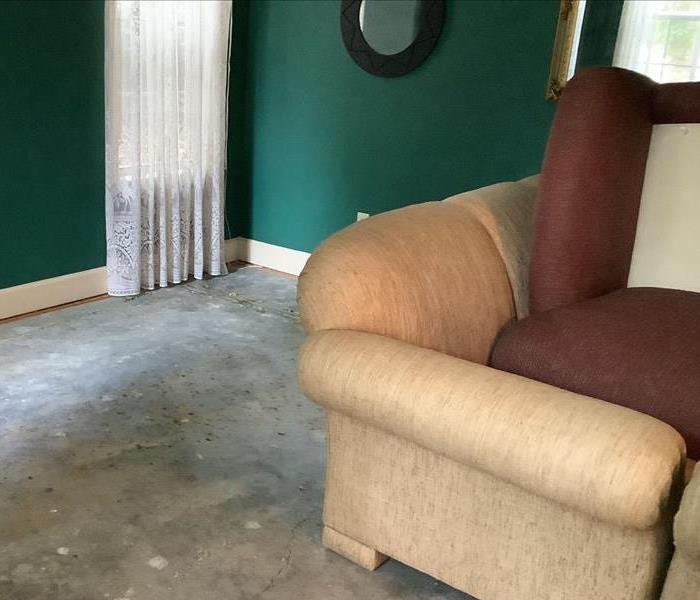SERVPRO Crew Shares Expertise on DIY and Professional Services
5/30/2022 (Permalink)
When it comes to experts, we are it! Still, there are times where you may be able to remedy restoration issues, and you deserve to know how to do just that when you can.
Storm damages, sewer line bursts, pipes leakage and other water damaging scenarios can cause really serious, long-term consequences. This damage can be toxic and cause mold growth. To avoid this, and other long-lasting complications, you can try the steps below on your own.
Timing is a huge factor in the success of DIY tactics. The sooner you can act, the better. This helps prevent a worsening issue and even more health effects to you, your family and co-workers. From the moment you notice signs, get moving ASAP for best results.
The first thing you should do is disconnect the outlets in the area. Water and electricity can be a fatal combination, so make sure to disconnect all outlets the moment you discover water damage in your home. Even if it is not apparent that high impact damages are in store, the first step MUST always be this one. If this step is not prioritized, and you go into the home without disconnecting the outlets, electrical shock explosions can take place.
The next thing to do is to check for mold in the area. As most know, mold thrives in moist spaces, so taking the time to inspect the entire home or building immediately is key. Here are a few common signs to look for:
- The prevalence of a musty, earthy smell
- Darkening of the grout in your shower tiles
- Wallpaper peeling
- Dark or colored spots on your walls
Most obviously, it’s important to dry the water out! Also was dry asap to prevent the damage from worsening. Leaving still water in any spaces, for any period of time, is a haven for germs and bacteria- weakening the structure of your home. A few ways that you can do this are using fans, dehumidifiers to dry out walls and carpets as well.
Another thing you can do on your own is remove any damaged items. All too often, water damage will wreak havoc on the items inside the home as well. It’s important to inspect furniture, carpet, flooring, drywall and other items that are of no use and are holding moisture ongoing.
The last DIY tactic we recommend is to disinfect! Even if it seems a small area has the damage, you can’t be certain that bacteria has not reached other areas. We use the “better safe than sorry” method here and always suggest sanitizing the property with bleach as quickly as possible.
If you attempt some or all of the above, and you are still not reaching a remedy stage, calling our crew in is a sure bet to getting a solution in place and restoring the routines you need to carry on life as usual. We pride ourselves on being both educational with tips and hands on when the help is needed. That is how we SERV!






 24/7 Emergency Service
24/7 Emergency Service